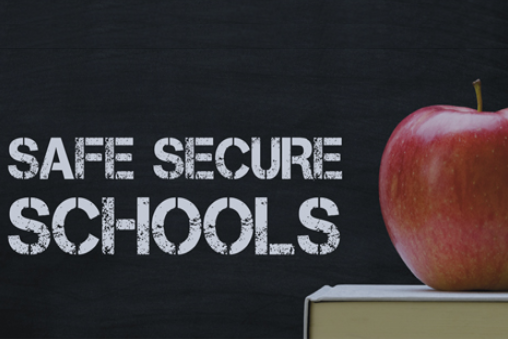
School Safety and Student Success – An Important Relationship
Providing a safe learning environment for students and staff is a top priority for school systems, whether public or private. It is also one of the most significant concern of parents. When students feel safe, they can focus on learning and increase their academic achievement. When instructional and non-instructional staff feel safe, they can focus on their purpose of developing and nurturing students. For these and other benefits, school systems must strive to ensure safe environments for students, staff, and the community.
What constitutes a “Safe School”
While there may be as many definitions of school safety as there are schools, a general definition of a safe school is where the learning and teaching process is not disrupted, and threats are minimized. Often when people think of school safety, they immediately think of preventing school shootings. While school safety involves physically protecting students and staff (think environmental design features, security personnel and practices, emergency operations plans, disciplinary actions, etc.), school safety has a psychological component as well. A comprehensive approach to school safety balances the need for physical and psychological safety. Many of the behaviors (e.g., bullying, criminal activity, suicide, alcohol and drug abuse) that make a school “unsafe” can have an underlying psychological component. While not an exhaustive list, a safe and welcoming school tends to do the following:
- Focus on academic achievement
- Involve families and communities in meaningful ways
- Emphasize positive relationships among students and staff
- Treat both students and staff with respect
- Create ways for students and staff to share their concerns
- Have clear and positive rules
- Develop and encourage links to the community
- Provide inviting classrooms and engaging environments
- Promote good citizenship and character
- Prioritize mental health of students and staff and mental health resources available
- Support students in making the transition to adult life and the workplace
Impact of safety on a student’s success at school
Most scholars identify school climate as having four dimensions:
- Safety – physical, emotional, and social safety of students, staff, and community
- Teaching and Learning – rigorous teaching and instructional strategies, professional development opportunities for staff
- Interpersonal Relationships – student connectedness, staff relationships and collaboration
- Institutional Environment – physical surroundings and positive engagement of students in school
Of the four dimensions, safety was most strongly associated with a positive school climate and with academic development. Data also shows that parents’ perception of safety as a part of the overall school climate influenced 1) the student’s perception of school and attitudes toward it, 2) the student’s engagement with the school, and 3) whether the student would attend school. In short, safety and perceptions of safety have a significant impact on students.
Impact on students’ academics
A study examining the connection between school safety and academic performance revealed students who felt safe were “more attentive and efficient in the classroom.” Conversely students who felt unsafe had difficulty focusing and concentrating in class. The longitudinal study suggests that high schoolers who feel less safe at school have decreased learning potential.
Impact on students’ mental health
Many studies confirm that feeling unsafe at school contributes to symptoms of depression, thus impacting student’s emotional health and behaviors. Depression is often linked with a lower chance of graduating and engaging in risky behaviors like alcohol and drug use and carrying guns and other weapons. A growing concern is bullying and how it impacts students’ mental health. Bullying behavior and suicide-related behavior are closely related with young people who report involvement with bullying behavior being more likely to report high levels of suicide-related behavior than those who do not report any involvement with bullying behavior.
Impact on students’ attendance
Research has shown that students who are bullied are more likely to experience depression and anxiety, have more health complaints, and skip or drop out of school. Students often feel that staying away from school helps them avoid their perpetrator(s) and therefore is the safest course of action. Frequent absences in turn negatively impact a student’s overall academic achievement
Conclusion
The (perceived) safety of a school has a tremendous impact on its students’ academic performance, physical and emotional health, and their overall well-being. Students who feel safe in their schools can thrive exponentially; whereas students who do not feel safe face many challenges to their success. Improving school safety is an ongoing responsibility of school leaders and personnel, students, parents, and communities.
The K12BLOOM Threat Assessment and Intervention module provides a deeper understanding of student behavior by capturing critical behavior and incident information beyond standard Student Information System (SIS) information. For example, BLOOM captures whether the student has been bullied and/or has bullied others. Capturing this information can help teachers, administrators, counselors, and other relevant parties better understand the student’s behavior and future behavior drivers.
Want to learn more about how BLOOM can help with student and school safety? Contact us: [email protected]
